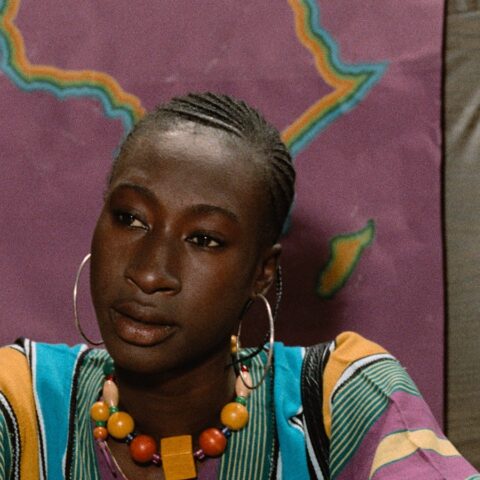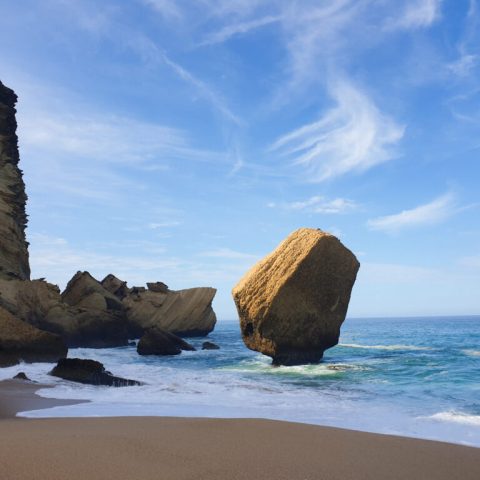It is hurricane season, if you live in America. Despite the fact that Katrina and now Rita never touch this shore, the media has been bombarding us with blow by blow antics of the natural disasters that have been devastating the US Gulf Coast.Here, The Explainer gives the lowdown on hurricanes.What are hurricanes and how do you forecast them?The terms “hurricane” and “typhoon” are regionally specific names for a strong “tropical cyclone”. A tropical cyclone is the generic term for a non-frontal synoptic scale low-pressure system over tropical or sub-tropical waters with organized convection (i.e. thunderstorm activity) and definite cyclonic surface wind circulation.Tropical cyclones with maximum sustained surface winds of less than 17 m/s (34 kt, 39 mph) are called “tropical depressions” (This is not to be confused with the condition mid-latitude people get during a long, cold and grey winter wishing they could be closer to the equator).Once the tropical cyclone reaches winds of at least 17 m/s (34 kt, 39 mph) they are typically called a “tropical storm” and assigned a name. If winds reach 33 m/s (64 kt, 74 mph)), then they are called:”Hurricane” (the North Atlantic Ocean, the Northeast Pacific Ocean east of the dateline, or the South Pacific Ocean east of 160E)”Typhoon” (the Northwest Pacific Ocean west of the dateline)”Severe tropical cyclone” (the Southwest Pacific Ocean west of 160E or Southeast Indian Ocean east of 90E)”Severe cyclonic storm” (the North Indian Ocean)”Tropical cyclone” (the Southwest Indian Ocean)Where do they get their names from?Tropical cyclones are named to provide ease of communication between forecasters and the general public regarding forecasts, watches, and warnings.Since the storms can often last a week or longer and that more than one can be occurring in the same basin at the same time, names can reduce the confusion about what storm is being described.The first use of a proper name for a tropical cyclone was by an Australian forecaster early in the 20th century. He gave tropical cyclone names “after political figures whom he disliked.By properly naming a hurricane, the weatherman could publicly describe a politician (who perhaps was not too generous with weather-bureau appropriations) as ‘causing great distress’ or ‘wandering aimlessly about the Pacific.'” (Perhaps this should be brought back into use ;-)During World War II, tropical cyclones were informally given women’s names by US Army Air Corp and Navy meteorologists (after their girlfriends or wives) who were monitoring and forecasting tropical cyclones over the Pacific.From 1950 to 1952, tropical cyclones of the North Atlantic Ocean were identified by the phonetic alphabet (Able-Baker-Charlie-etc.), but in 1953 the US Weather Bureau switched to women’s names. In 1979, the WMO and the US National Weather Service (NWS) switched to a list of names that also included men’s names.The Northeast Pacific basin tropical cyclones were named using women’s names starting in 1959 for storms near Hawaii and in 1960 for the remainder of the Northeast Pacific basin. In 1978, both men’s and women’s names were utilized.The Northwest Pacific basin tropical cyclones were given women’s names officially starting in 1945 and men’s names were also included beginning in 1979.Beginning on January 1, 2000, tropical cyclones in the Northwest Pacific basin are being named from a new and very different list of names. The new names are Asian names and were contributed by all the nations and territories that are members of the WMO’s Typhoon Committee.These newly selected names have two major differences from the rest of the world’s tropical cyclone name rosters.One, the names by and large are not personal names. There are a few men’s and women’s names, but the majority are names of flowers, animals, birds, trees, or even foods, etc, while some are descriptive adjectives.Secondly, the names will not be allotted in alphabetical order, but are arranged by contributing nation with the countries being alphabetized.The North Indian Ocean region tropical cyclones are not named.The Southwest Indian Ocean tropical cyclones were first named during the 1960/1961 season.The Australian and South Pacific region (east of 90E, south of the equator) started giving women’s names to the storms in 1964 and both men’s and women’s names in 1974/1975.Who or what determine whether the names should be feminine like Rita or masculine like Andrew?The names of hurricanes, typhoons, etc are decided by the various Tropical Cyclone centres. The one in Miami decides the names for the north Atlantic and northeast PacificHow or when do storms become hurricanes?Tropical Storms become hurricanes when mena wind speeds reach 74mph.Are hurricanes just synonymous with the Caribbean and the Gulf Coast of the United States? Or do they happen here in the UK and Europe and how regular do they occur?Hurricanes are tropical features and require sea temperatures of at least 27C to be maintained. Sea temperatures round the UK are nowhere near that high, even in high summer, so they cannot exist at our latitudes.However, we do get the remnants of old hurricanes coming out of the tropics, and they get entrained into the Atlantic flow, causing some of the depression to be more active than usual., as they add extra moisture and heat.The infamous storm of October 1987 continued the remnants of an old hurricane, and August 2004, saw at least 3 ex-hurricanes come across the UK, giving a wetter than average month. We can get hurricane force winds from our normal winter storms, but we do not get hurricanes.Are all hurricanes violent and how do you grade them?Not all hurricanes are violent, and sometimes it is the heavy rain that causes problems, rather than the strong winds.The scale below refers to the Atlantic and northeast Pacific.Hurricane strength is defined on the Saffir-Simpson scale noted below:Category 1 sustained wind speeds of 74 to 95 m.p.h.Category 2 sustained wind speeds of 96 to 110 m.p.h.Category 3 sustained wind speeds of 111 to 130 m.p.h.Category 4 sustained wind speeds of 131 to 155 m.p.h.Category 5 sustained wind speeds greater than 155 m.p.h.What is the worst hurricane ever in the world, Europe and in the British Isles?The ‘worst’ hurricane is difficult to judge, as there are some variable, worst winds, most expensive, greatest loss of life, etcAre we expecting any hurricanes in Europe anytime soon?As mentioned earlier we do not get hurricanes in the UK or Europe, but the remnants. Scotland has caught the remnants of at least 2 if not 3 in recent weeks that have come out of the tropics, but we do not envisage any from the time being. Hurricane Rita looks like dissipating inland over Texas, so does not threaten us, but there are over 2 months to go in the season, so we need to be vigilant.With thanks to Robin Thwaytes at the UK Meteorological Office.For answers to questions on any news events please e-mail editor@thenewblackmagazine.com
Understanding Hurricanes
No Comments currently posted | Add Comment
Comment on this Article
Your Name
Please provide your name
Your Comment
//set data for hoidden fields
//transfer();
var viewMode = 1 ;
//============================================================================
//HTML Editor Scripts follow
//============================================================================
function exCom(target,CommandID,status,value)
{
document.getElementById(target).focus();
document.execCommand(CommandID,status,value);
}
function transfer()
{
var HTMLcnt = document.getElementById(“ctl00_MainContent_txtComment_msgDiv1”).innerHTML;
var cnt = document.getElementById(“ctl00_MainContent_txtComment_msgDiv1”).innerText;
var HTMLtarget = document.getElementById(“ctl00_MainContent_txtComment_HTMLtxtMsg”)
var target = document.getElementById(“ctl00_MainContent_txtComment_txtMsg”)
HTMLtarget.value = HTMLcnt;
target.value = cnt;
}
function hidePDIECLayers(f,p)
{
//e.style.display = ‘none’
f.style.display = ‘none’
p.style.display = ‘none’
}
function toggle(e)
{
if (e.style.display == “none”)
{
e.style.display = “”;
}
else
{
e.style.display = “none”;
}
}
function ToggleView()
{
var msgDiv = document.getElementById(“ctl00_MainContent_txtComment_msgDiv1″);
if(viewMode == 1)
{
iHTML = msgDiv.innerHTML;
msgDiv.innerText = iHTML;
//alert(viewMode);
// Hide all controls
Buttons.style.display = ‘none’;
//selFont.style.display = ‘none’;
//selSize.style.display = ‘none’;
msgDiv.focus();
viewMode = 2; // Code
}
else
{
iText = msgDiv.innerText;
msgDiv.innerHTML = iText;
// Show all controls
Buttons.style.display = ‘inline’;
//selFont.style.display = ‘inline’;
//selSize.style.display = ‘inline’;
msgDiv.focus();
viewMode = 1; // WYSIWYG
}
}
function selOn(ctrl)
{
ctrl.style.borderColor = ‘#000000’;
ctrl.style.backgroundColor = ‘#ffffcc’;
ctrl.style.cursor = ‘hand’;
}
function selOff(ctrl)
{
ctrl.style.borderColor = ‘#9BC1DF’;
ctrl.style.backgroundColor = ”;
}
function selDown(ctrl)
{
ctrl.style.backgroundColor = ‘#8492B5’;
}
function selUp(ctrl)
{
ctrl.style.backgroundColor = ‘#B5BED6’;
}
�
Size 1
Size 2
Size 3
Size 4
Size 5
Size 6
Size 7
//give focus to the msgdiv… always otherwise save button will not save content.
var mDiv = document.getElementById(“ctl00_MainContent_txtComment_msgDiv1”);
try
{ mDiv.focus();}
catch(e)
{
//alert(‘Invisible’)
}
//if ( <> ‘none’)
//
Send to a friend | �
View/Hide Comments (0) | �




Nice blog right here! Also your site so much up very
fast! What host are you the use of? Can I am getting your associate link to your host?
I wish my site loaded up as fast as yours lol!
Howdy! Do you know if they make any plugins to help with Search Engine
Optimization? I’m trying to get my blog to rank for some targeted keywords but I’m not seeing very good
gains. If you know of any please share. Appreciate it!
I saw similar art here: Eco blankets
Major thankies for the article post. Really Great.